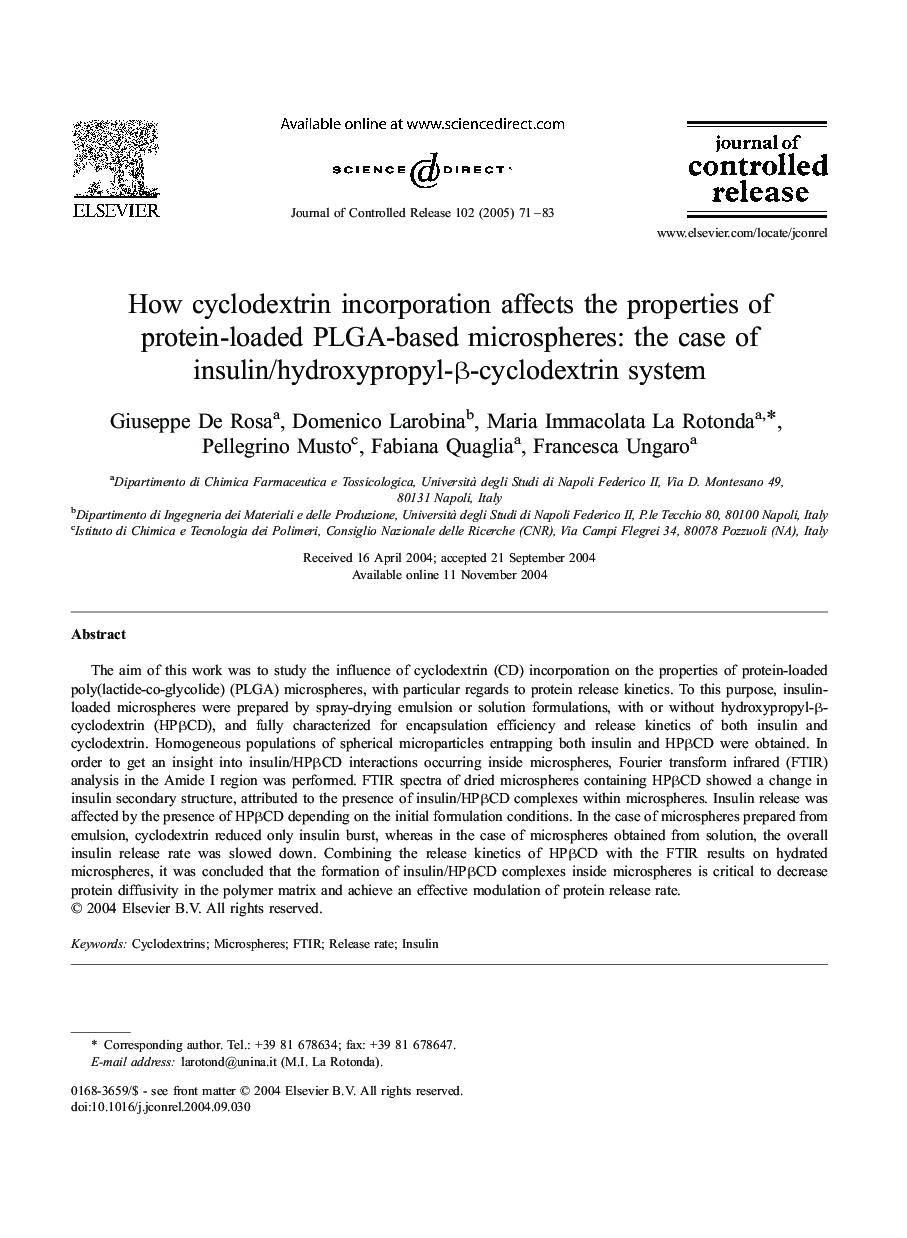| Article ID | Journal | Published Year | Pages | File Type |
|---|---|---|---|---|
| 10613527 | Journal of Controlled Release | 2005 | 13 Pages |
Abstract
The aim of this work was to study the influence of cyclodextrin (CD) incorporation on the properties of protein-loaded poly(lactide-co-glycolide) (PLGA) microspheres, with particular regards to protein release kinetics. To this purpose, insulin-loaded microspheres were prepared by spray-drying emulsion or solution formulations, with or without hydroxypropyl-β-cyclodextrin (HPβCD), and fully characterized for encapsulation efficiency and release kinetics of both insulin and cyclodextrin. Homogeneous populations of spherical microparticles entrapping both insulin and HPβCD were obtained. In order to get an insight into insulin/HPβCD interactions occurring inside microspheres, Fourier transform infrared (FTIR) analysis in the Amide I region was performed. FTIR spectra of dried microspheres containing HPβCD showed a change in insulin secondary structure, attributed to the presence of insulin/HPβCD complexes within microspheres. Insulin release was affected by the presence of HPβCD depending on the initial formulation conditions. In the case of microspheres prepared from emulsion, cyclodextrin reduced only insulin burst, whereas in the case of microspheres obtained from solution, the overall insulin release rate was slowed down. Combining the release kinetics of HPβCD with the FTIR results on hydrated microspheres, it was concluded that the formation of insulin/HPβCD complexes inside microspheres is critical to decrease protein diffusivity in the polymer matrix and achieve an effective modulation of protein release rate.
Related Topics
Physical Sciences and Engineering
Materials Science
Biomaterials
Authors
Giuseppe De Rosa, Domenico Larobina, Maria Immacolata La Rotonda, Pellegrino Musto, Fabiana Quaglia, Francesca Ungaro,
